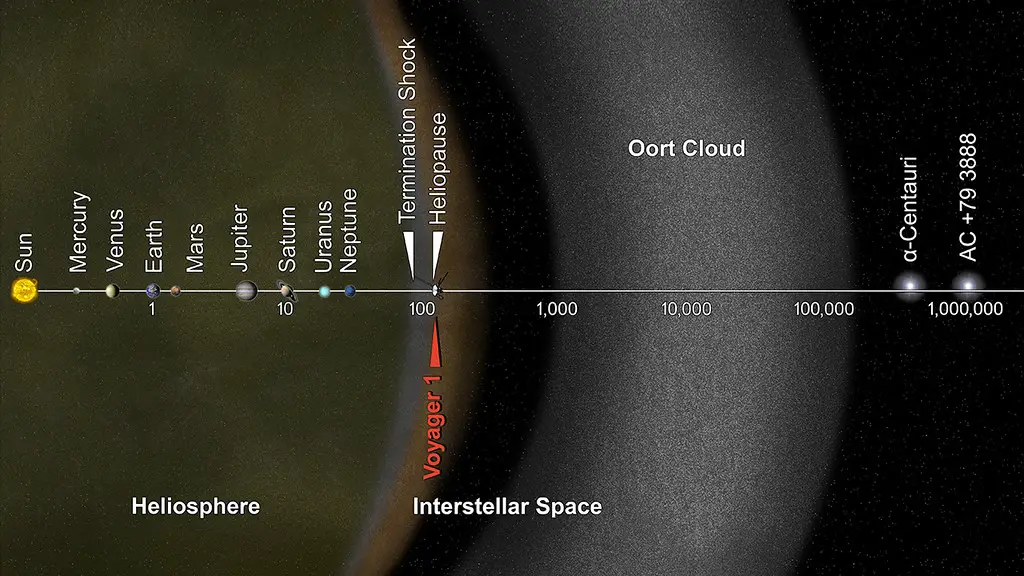Beyond the recognizable planets and moons that orbit the sun, the expanse of our solar system extends much further out into interstellar space. The Kuiper Belt and the Oort Cloud are two fascinating locations that can be found well out in the limits of the universe. These regions, which are made up of frozen things, have piqued the interest of both astronomers and people who are interested in space in general. Although the Kuiper Belt and the Oort Cloud have a number of things in common, they also have a number of distinctive qualities that set them different from one another. Let’s investigate some of the fundamental contrasts that exist between these two mysterious parts of our solar system.
Composition and Position in the World
Both the Kuiper Belt and the Oort Cloud are known to contain large quantities of frozen objects; yet, their make-up and locations are very different from one another.
The Kuiper Belt is an area that can be found around 30 to 55 astronomical units (AU) distant from the Sun and is said to extend outward from the orbit of Neptune. An astronomical unit is equal to the average distance that separates the Earth and the Sun, which is around 150 million kilometers or 93 million miles. Numerous ice things, such as Pluto, Eris, and Haumea, as well as a plethora of smaller objects collectively referred to as Kuiper Belt Objects (KBOs), can be found in the Kuiper Belt. These items are predominantly made up of a variety of ices, including water, methane, and ammonia, in addition to components that are rocky in nature.
On the other hand, the Oort Cloud is a vast and largely theoretical region that surrounds the solar system. It was named for the astronomer who first proposed its existence. It is positioned a significant distance from the Sun, somewhere between 2,000 and 100,000 astronomical units (AU) away. It is thought that the Oort Cloud is a spherical shell that extends well beyond the Kuiper Belt and encircles the Sun and the inner planets. The Oort Cloud, in contrast to the Kuiper Belt, which is made up of relatively larger objects, is almost entirely made up of icy bodies. Comets, which are frequently referred to as Oort Cloud Comets or simply long-period comets, are one example of the Oort Cloud Comets. These comets are made up of a variety of different components, including water ice, dust, and stony fragments.
The Beginning and the Growing Up
Gaining a deeper understanding of the processes that led to the development of celestial bodies as well as their properties and behaviors can be a significant benefit. There are a couple of different hypotheses floating around about how the Kuiper Belt and the Oort Cloud came to be.
It is believed that the leftovers of the early solar system coalesced into what is now known as the Kuiper Belt. Large quantities of cold and rocky material were dispersed beyond the orbit of Neptune during the process that resulted in the formation of the planets. Some of these fragments eventually came together to create dwarf planets and Kuiper Belt Objects, while others stayed in the asteroid belt as smaller objects. The Kuiper Belt that we see today was shaped in part by the gravitational interactions that occurred between these objects as well as the influence that Neptune’s gravity had on the system.
On the other hand, the process that led to the development of the Oort Cloud is not completely understood. It is thought to have come from the ice debris that was left over after the formation of the planets in the solar system’s outer ring, such as Jupiter, Saturn, Uranus, and Neptune. Some of these ice bodies may have been ejected towards the outer reaches of the solar system as a result of gravitational interactions with big planets, as well as the passage of stars and the tides of the galaxy. This resulted in the formation of the spherical Oort Cloud. It is believed that the Oort Cloud is a leftover from the early stages of the solar system. It contains frozen bodies that have survived for billions of years in a form that is largely unchanged.
Population and Statistical Variables
There is a big difference in both the population and the behavior of the objects that can be found in the Kuiper Belt and the Oort Cloud.
When compared to the Oort Cloud, the Kuiper Belt has a significantly larger population and has received significantly more attention from researchers. It is thought that it contains hundreds of thousands of objects with a diameter of more than 100 kilometers (62 miles), in addition to innumerable bodies of a more manageable size. This region is home to a number of notable dwarf planets, including Pluto and Eris, among others. In general, the orbits of the Kuiper Belt objects are either reasonably circular or slightly elliptical.
![]()
